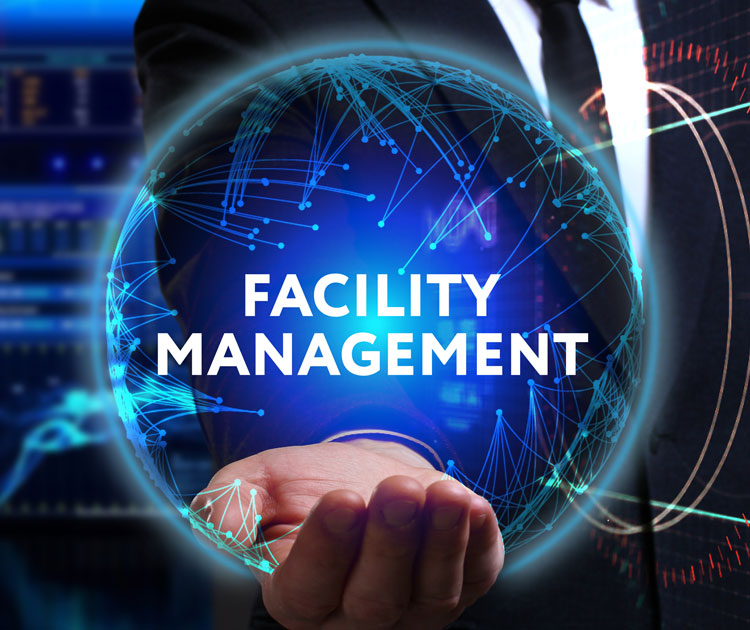The Important Guide to Facility Monitoring: Techniques for Success
Facility administration plays an important role in the general success of an organization, functioning as the foundation that sustains effectiveness, productivity, and safety and security. By using critical methods such as incorporated technical options and cultivating cross-departmental cooperation, organizations can significantly boost their operational structures. Nevertheless, the nuances of reliable facility monitoring prolong beyond simple logistics and require a thorough understanding of both quantitative and qualitative metrics. As we explore these necessary techniques, a closer exam reveals just how they can transform not simply centers, but the actual culture within an organization itself. What might these transformations resemble in method?
Comprehending Facility Monitoring
What constitutes effective facility administration? Efficient center monitoring encompasses the coordination of various organizational functions to make sure that developed settings are secure, reliable, and helpful to productivity. Facility Management. It integrates the principles of design, organization, and style administration to produce a seamless operational flow within an organization
Crucial element of center monitoring consist of room preparation, maintenance administration, and compliance with health and wellness regulations. Room preparation concentrates on enhancing making use of physical resources to sustain business goals, while maintenance monitoring makes certain that facilities are maintained in ideal condition, optimizing life expectancy and decreasing operational prices. Compliance with lawful and regulative requirements is important, as it safeguards the organization versus possible obligations and enhances its online reputation.
Moreover, efficient center administration relies upon the strategic usage of technology, such as Structure Administration Systems (BMS) and Computer-Aided Center Management (CAFM) devices. These innovations facilitate real-time tracking of building systems and improve maintenance procedures. Eventually, a comprehensive technique to facility monitoring not only advertises operational performance but additionally fosters a favorable environment for site visitors and staff members alike, driving general business success.
Key Techniques for Optimization
Optimizing facility administration requires a strategic approach that lines up operational exercise with organizational objectives. To accomplish this, the first essential strategy is the execution of integrated technical services. Using innovative software application systems enables real-time tracking of center operations, facilitating data-driven decision-making and boosting total performance.
Second of all, regular evaluations of facility performance are essential. Carrying out routine evaluations and audits makes it possible for facility supervisors to identify locations that require renovation, making sure that sources are allocated efficiently. This proactive method assists in reducing downtime and boosting solution shipment.
Another important technique is fostering cooperation throughout departments. By encouraging open interaction between teams, center managers can much better align their strategies with business goals, causing improved operational harmony. Additionally, engaging staff in training programs advertises a culture of accountability and boosts their capability to add to optimization initiatives.
Enhancing Security Protocols
Reinforcing safety protocols is crucial for producing a secure atmosphere within centers. An extensive safety and security protocol not just secures workers and site visitors yet likewise boosts operational effectiveness. To accomplish this, facility managers must carry out routine danger analyses to recognize potential threats and make sure that suitable measures remain in place.
Training and education are essential elements of effective security protocols - Facility Management. Employees ought to get continuous training in emergency situation procedures, devices handling, and individual safety procedures. Routine drills, such as fire evacuations or lockdown procedures, foster knowledge and preparedness amongst team
Furthermore, clear interaction networks should be established to report safety and security concerns promptly. This includes producing an available system for staff members to articulate possible risks or incidents without fear of reprisal. Leveraging technology can improve security steps; for instance, applying monitoring systems and gain access to controls helps keep an eye on facility activities and limit unapproved entrance.
Lastly, compliance with regional guidelines and industry requirements is non-negotiable. Routine audits and reviews of safety protocols guarantee placement with current legislations and ideal techniques. By prioritizing these techniques, center supervisors can grow a culture of safety that safeguards all stakeholders and inevitably adds to the organization's success.
Improving Workplace Atmosphere

Ergonomic factors to consider are vital to decrease physical pressure and pain. Facility Management. This entails giving flexible furnishings, appropriate illumination, and sufficient area for motion. These modifications can result in decreased absenteeism and increased job satisfaction
Visual appeals play an important role in shaping the office ambience. Using color psychology, natural lighting, and plant can promote a welcoming and stimulating atmosphere. Thoughtfully designed rooms can improve imagination and improve total health.
Additionally, motivating employee involvement with inclusive decision-making procedures can improve the sense of possession and belonging. Gathering feedback on office enhancements and including employees in the layout process can lead to a more customized atmosphere that meets their demands.
Finally, promoting health efforts, such as health cares and leisure spaces, can additionally contribute to an encouraging work environment culture. By concentrating on these techniques, center managers can effectively enhance the workplace atmosphere, driving both employee contentment and organizational success.
Determining Success in Facilities
Measuring success in center management needs an extensive technique that reviews both measurable and qualitative metrics. Quantitative metrics commonly include Facility Management vital performance signs (KPIs) such as room usage rates, power consumption, maintenance prices, and occupancy levels. These metrics give a clear picture of functional performance and financial efficiency, permitting facility managers to recognize locations for improvement and criteria versus industry requirements.
Qualitative metrics, on the various other hand, concentrate on user fulfillment and staff member engagement. Surveys and comments devices can determine how well the facilities satisfy the demands of occupants, helping to examine the total office environment. This aspect is important, as a completely satisfied labor force is frequently linked to boosted performance and retention prices.
To properly measure success, facility managers ought to likewise think about incorporating technology, such as developing here management systems and data analytics tools, to collect and evaluate relevant data. Frequently examining both collections of metrics permits an extra well balanced sight of performance and informs tactical choices. Inevitably, an effective center administration method pivots on a dedication to constant enhancement, making sure that both operational effectiveness and user complete satisfaction are prioritized.
Conclusion

Center administration plays an essential function in the total success of an organization, offering as the foundation that supports safety, efficiency, and performance.Secret components of center management include space planning, upkeep administration, and conformity with wellness and safety policies.In addition, reliable facility management depends on the calculated usage of Facility Management technology, such as Building Management Solution (BMS) and Computer-Aided Facility Administration (CAFM) devices. Inevitably, a comprehensive method to facility administration not just advertises functional effectiveness yet additionally cultivates a favorable setting for site visitors and staff members alike, driving total business success.
Ultimately, an effective center monitoring approach pivots on a dedication to constant enhancement, making sure that both functional effectiveness and individual complete satisfaction are prioritized.